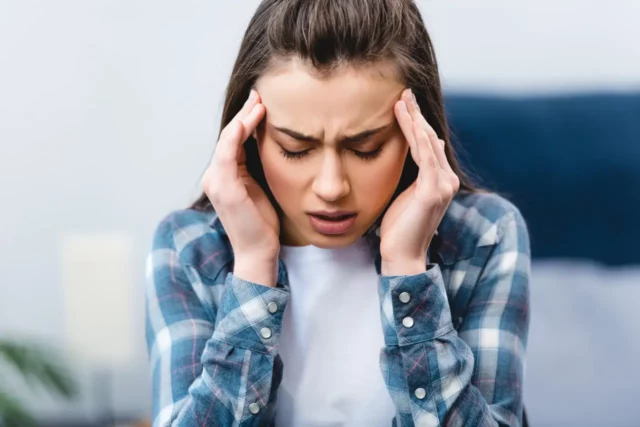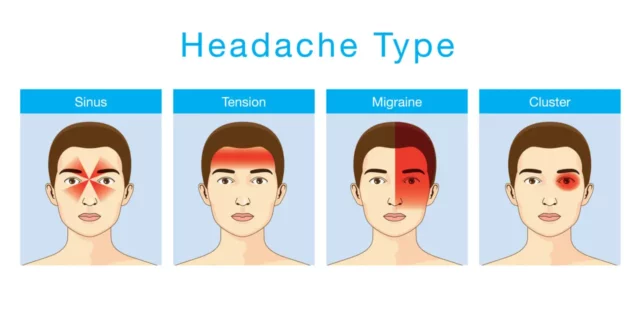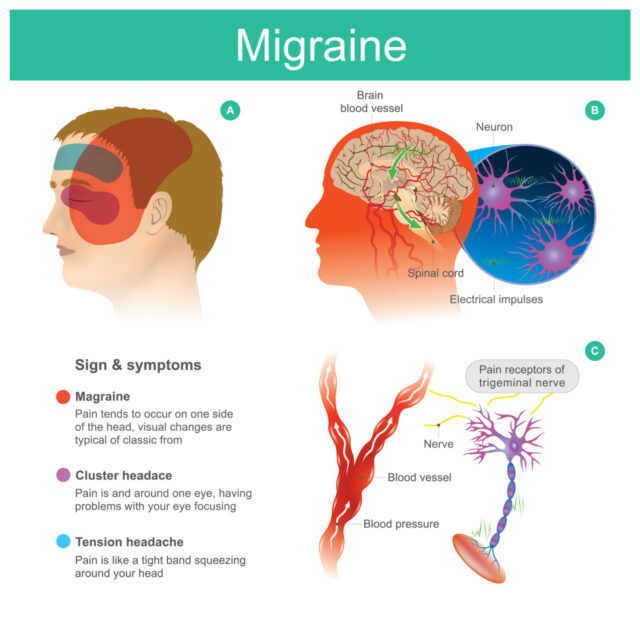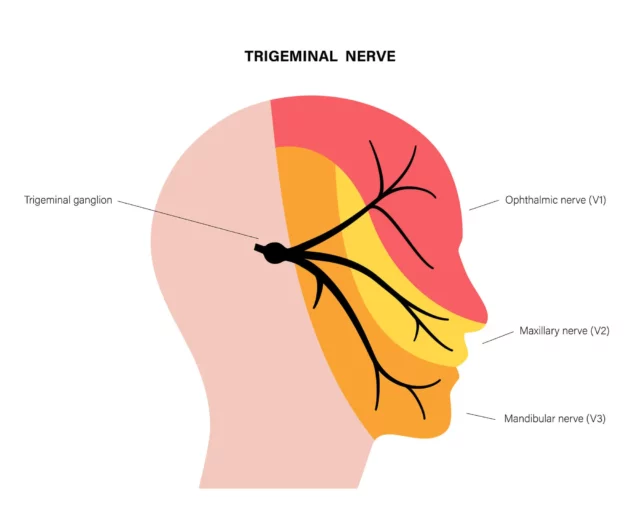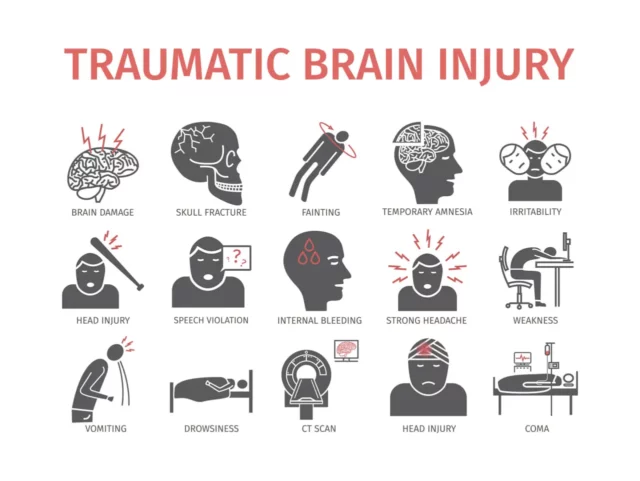Today, it’s estimated that over half of the world’s population experiences headaches regularly. However, not all headaches are the same.
Some, such as those caused by hangovers, dehydration, or muscle tension, are temporary and can be alleviated with at-home care. In contrast, some headaches might indicate a more serious underlying condition requiring medical attention.
If you experience throbbing pain in your head or face, seeking an accurate diagnosis and exploring treatments is crucial.
This guide explores throbbing headaches and how the NextPain Care approach can assist. Let’s delve in.
What Is A Throbbing Headache?
Throbbing pain is a common symptom across various types of headaches. It typically presents as a rhythmic pulsing, beating, or pounding sensation that may affect either a specific part of the head or the entire head.
Common causes of throbbing headaches include primary headaches like migraines or secondary conditions such as caffeine withdrawal. In rare cases, throbbing sensations can be attributed to serious, potentially life-threatening conditions like blocked blood vessels or brain bleeding (stroke).
The exact reasons why migraines cause pain remain unclear. However, research from 2023 suggests that these painful sensations may result from chemicals that constrict brain blood vessels and the activation of the trigeminal nerve on the side of the face. Additionally, the rhythmic nature of throbbing pain might be linked to blood vessels pulsating in sync with the heartbeat, stimulating nearby pain-transmitting nerve cells.
The intensity, frequency, and location of throbbing pain can vary but often spread from the head to the face, ears, neck, and shoulders, lasting up to 72 hours. According to a study published in Nature, women are two to three times more likely than men to experience headaches and migraines.
If you experience chronic head pain or throbbing sensations that significantly interfere with your daily life, it’s essential to seek an accurate diagnosis. Here’s what you need to know.
Where In The Head Does It Hurt?
Understanding the location of throbbing pain can provide important diagnostic insights. Here are potential causes based on pain location:
Below, we’ll look at the possible causes of throbbing headaches based on where it hurts:
- Back of head: This might be caused by damage to the nerves connecting the spinal cord to the scalp, also affecting areas behind the eyes or across the scalp.
- Top of head: This could be a sign of migraines, stress, poor posture, or dehydration. Additional symptoms like sensitivity to light and sound can help pinpoint the cause.
- Left or right side: Conditions like migraines or hemicrania continua often cause pain on one side of the head.
- Behind eyes: Cluster headaches, characterized by pain behind the eye, can last 15 minutes to three hours and spread to the cheeks, temples, and jaws.
- Temples: Temporal arteritis, causing throbbing temple pain and tenderness, occurs when head arteries swell. Other causes include tension headaches, migraines, and temporomandibular joint (TMJ) disorders.
- Headache with neck pain: Often resulting from tense muscles and poor posture, these headaches are accompanied by neck pain and stiffness.
Throbbing headaches may come with nausea, vomiting, sensitivity to light or smell, mood disturbances, scalp tenderness, pain while chewing, and restlessness.
Common Causes
Throbbing head pain can have a wide range of causes and is classified as either primary (pain is the condition itself) or secondary (caused by external factors or other health conditions).
Primary headaches, such as migraines and tension headaches, are chronic or episodic. Secondary headaches can result from:
- High stress levels
- Lack of sleep
- Exposure to certain foods and allergies
- Dehydration
- Excess sunlight
- Seasonal allergies
- Head injuries
- Hormonal changes (e.g., pregnancy or menstrual cycle)
- Caffeine withdrawal
- Excessive physical activity
- Medication overuse
Conditions That May Cause A Throbbing Headache
Understanding whether throbbing pain is primary or secondary is crucial for appropriate treatment. Below are some key conditions:
Chronic Headaches And Migraines
Migraines are classified as primary headaches, but they involve much more than just head pain. These headaches are neurological disorders resulting from abnormal chemical reactions and pathways in the brain.
Migraines are marked by intense facial pain, typically localized to one side of the head or face. The throbbing sensations are often accompanied by symptoms such as vomiting, nausea, dizziness, sensitivity to light and sound, and temporary cognitive impairment.
Common triggers for migraines include stress, weather changes, and loud noises. These headaches are often recurrent, occurring multiple times a month. Currently, migraines affect over 12% of the population, significantly impacting both personal and professional aspects of life.
Tension Headaches
Tension headaches, a common type of primary headache, typically cause a dull pain that spreads across both sides of the head. These headaches often result from factors such as stress, fatigue, poor posture, or tense muscles in the neck and the base of the skull. They can be either chronic, occurring multiple times a week, or episodic.
Symptoms associated with tension headaches include:
- Pain that spreads to the forehead
- Painful sensations in the neck and back of the head
- A feeling of pressure around the head
While tension headaches often resolve within a few hours, frequent recurrence may indicate a more serious underlying issue.
Cluster Headaches
Cluster headaches are a type of primary headache characterized by severe, throbbing pain around or behind one eye. This pain can also extend to one side of the head, ears, forehead, eyes, and jaw. These headaches stem from a dysfunction of the trigeminal nerve, which spans the side of the face and transmits signals related to sensations and muscle movements to the brain.
While the symptoms of cluster headaches can overlap with other types of headaches, they have distinct features:
- They occur frequently, usually one to eight times a day.
- Each headache attack is brief, typically lasting between 15 minutes and 3 hours.
- The pain affects only one side of the face.
- The headaches often occur at the same time each day, most commonly at night.
Secondary Disorders
Secondary disorders causing throbbing pain include:
- Hangovers: Symptoms like tiredness, nausea, and sensitivity to light or sound, caused by alcohol’s effect on blood vessels, leading to throbbing headaches.
- Caffeine withdrawal: Symptoms include throbbing headaches, fatigue, sleepiness, depressed mood, nausea, and trouble concentrating, usually lasting two to nine days.
- Giant cell arteritis (GCA): A condition in adults over 50, causing inflamed blood vessels in the head and neck, with symptoms like scalp tenderness, jaw pain, vision problems, and temple headaches. Left untreated, GCA can lead to severe complications, including blindness.
Complications That May Come With A Throbbing Headache
Throbbing headaches caused by caffeine withdrawal or alcohol consumption are typically temporary inconveniences. However, in some cases, this pain can become acute or chronic, leading to various complications.
Chronic headaches and recurring migraines can significantly disrupt daily life. For instance, on average, migraine sufferers miss nearly five days of work annually and lose an additional 11 days due to reduced productivity. The higher healthcare costs associated with treating recurring headaches also elevate the risk of mental health issues like stress and anxiety.
When headaches become a persistent condition, they can cause ongoing discomfort and neck disability, as well as increase the risk of severe complications such as migraine-triggered infarction and seizures. Let’s explore these further.
Migraine-Triggered Seizure
Migraine and epilepsy share similar underlying mechanisms, leading to abnormal electrical activity in the brain. This surge in electrical activity can trigger seizures and cause various symptoms, including unusual sensations, mood swings, and heightened sensitivity to external stimuli.
Migraine-triggered seizures, in particular, occur during the “aura” phase of a migraine. This phase is marked by abnormal sensations, feelings of déjà vu, and alterations in vision, smell, and taste, often serving as a warning sign of an impending migraine attack.
Migraine Infarction
Migrainous infarction occurs when an ischemic stroke happens during the “aura” phase of a migraine attack. Similar to other types of strokes, a migraine infarction results from a disrupted blood supply to the brain. Changes in blood vessel activity and blood pressure during a migraine can trigger this type of stroke.
Though rare, it is crucial to remember that individuals diagnosed with migraines are 1.5 times more likely to develop conditions such as stroke, myocardial infarction, and angina.
When To Seek Medical Attention
Not all throbbing headaches require medical attention. For instance, hangover-related headaches can be managed with fluids and rest. However, chronic or severe headaches might indicate a serious underlying condition. Here are some signs that warrant medical consultation:
- Changing headache patterns: Sudden changes in headache patterns, nature, or location can signal a serious condition.
- Pregnancy/postpartum: Headaches during pregnancy or postpartum can indicate preeclampsia, a potentially life-threatening condition.
- Weakened immune system: Inflammation-related headaches, common in autoimmune conditions, can lead to serious complications.
- Older patients: Those over 50 have increased risks of severe conditions like temporal arteritis. Regular checkups are crucial, especially for new headache types.
- Headache triggered by sneezing, coughing, or exercising: These can indicate brain or spinal issues and warrant immediate attention.
- Rebound headaches from regular painkiller use: Chronic painkiller use can lead to complications, including rebound headaches.
When To Seek Emergency Assistance For Your Headache
While identifying underlying conditions causing throbbing headaches is important, sometimes these symptoms may indicate a life-threatening emergency requiring immediate attention.
Here are situations when you should call 911 immediately:
Sudden, Severe Headache
A sudden headache that becomes severe within minutes or seconds is a red flag. Throbbing pain that quickly intensifies can indicate life-threatening conditions like an aneurysm, meningitis, or stroke.
Headache After Injury
Headaches following a head injury, such as a blow to the head, may signal traumatic brain injury (TBI) or concussions. These headaches can become chronic and interfere with daily life.
How NextPain Care Manages Throbbing Head Pain
With a comprehensive approach offered by NextPain Care, you can address the root cause of your pain. Our three-level treatment approach starts with the least invasive treatment first, before moving to more advanced interventions. This ensures that our patients get the treatment suited to the symptoms and conditions they are dealing with.
Various Headache Conditions Treated At NextPain Care
At Next Pain Care, we treat a wide range of headache conditions, including chronic migraines, tension headaches, cluster headaches, and more. Our approach focuses on addressing the underlying causes of your specific condition, ensuring that you receive personalized care. Whether you’re dealing with migraines, tension, or other types of headaches, we provide treatments designed to offer effective relief tailored to your needs.
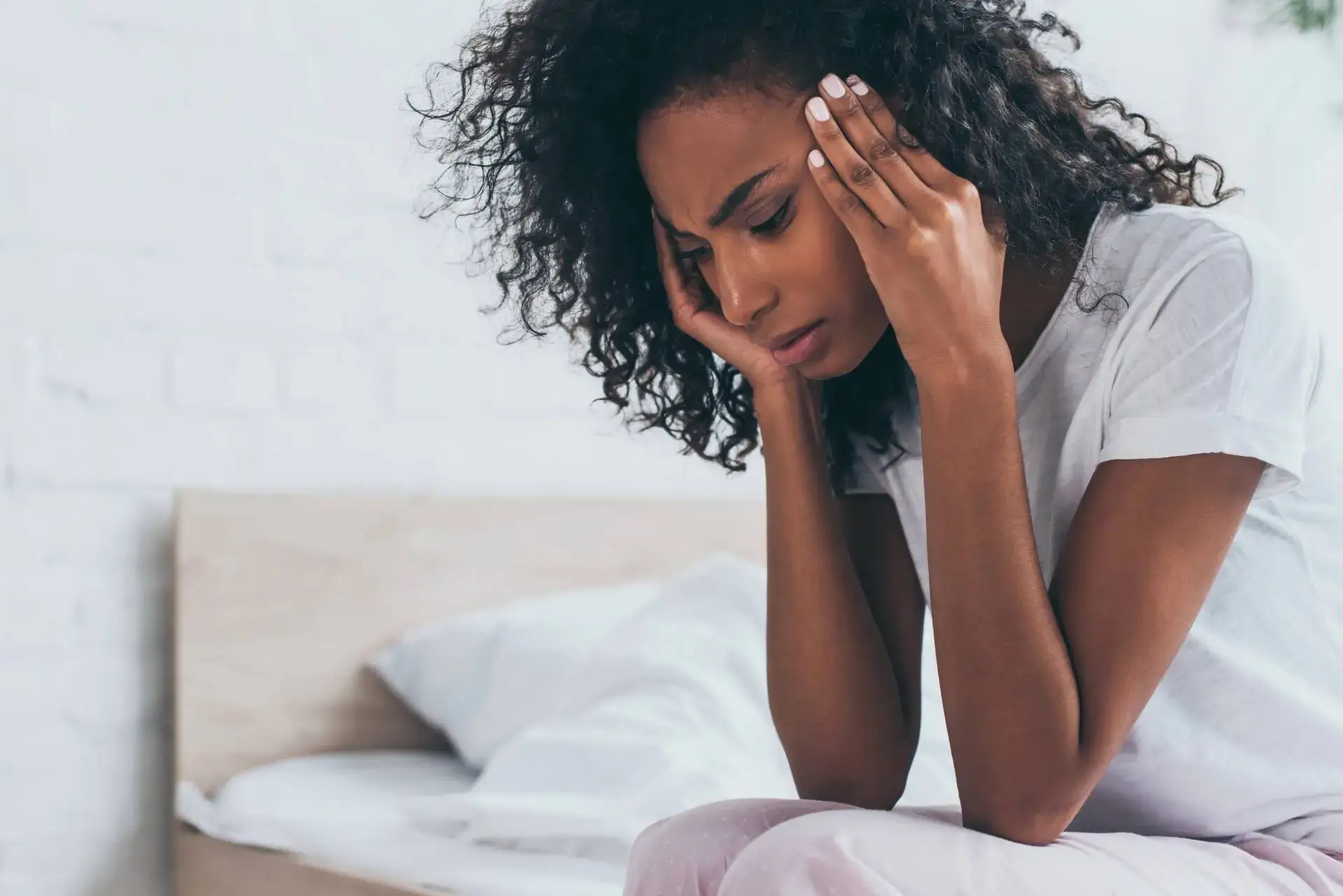
Chronic Migraines And Headache Pain Treatment
Chronic migraines and headaches can lead to severe pain, blurred vision, and fatigue. Experiencing these symptoms regularly can be debilitating and significantly impact your quality of life. At NextPain Care, our pain management approach is designed to reduce...
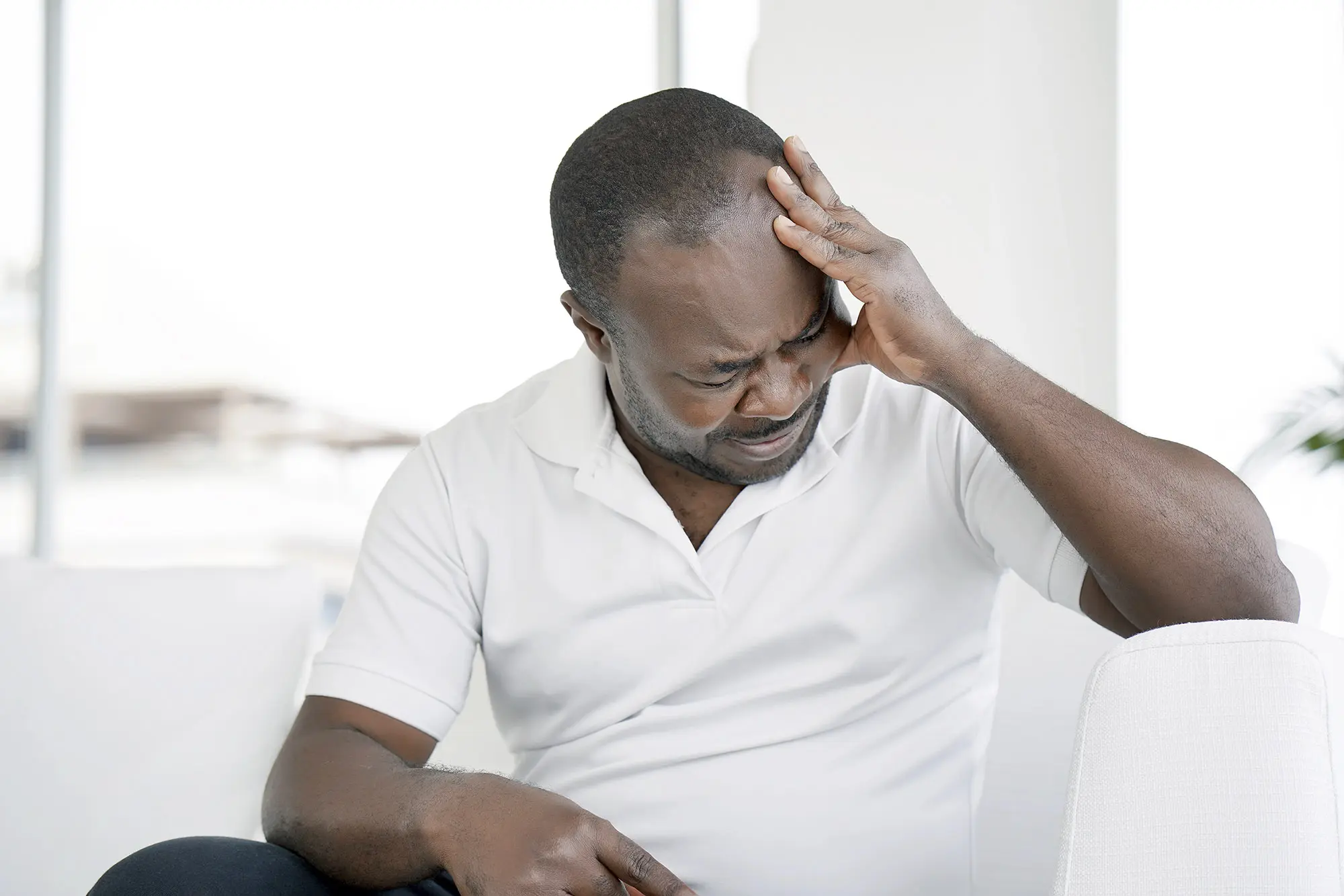
Tension Headaches Pain Treatment
A tension headache is a common yet debilitating form of headache that can cause intense, throbbing pain that lasts anywhere from 30 minutes to an entire week. Tension headaches can significantly affect day-to-day activities and your ability to get a good...
Find Relief From Throbbing Headaches
Throbbing head pain is a common issue that many people face, but it doesn’t have to be a part of your everyday life. At NextPain Care, we emphasize the importance of understanding the underlying factors contributing to your discomfort. Our approach goes beyond relying solely on traditional pain medications, offering a comprehensive assessment and a range of treatment options aimed at managing your symptoms and supporting overall well-being.
Experiencing throbbing headaches?

